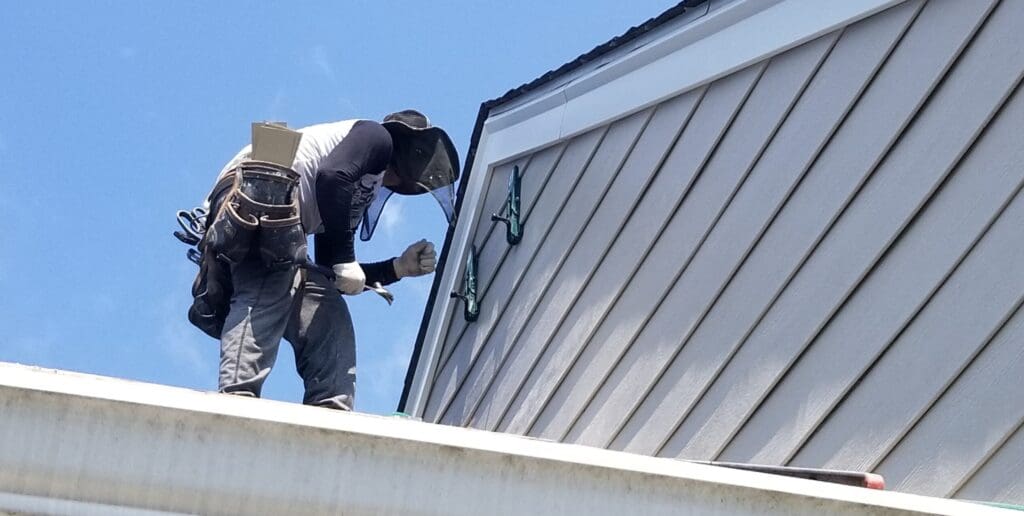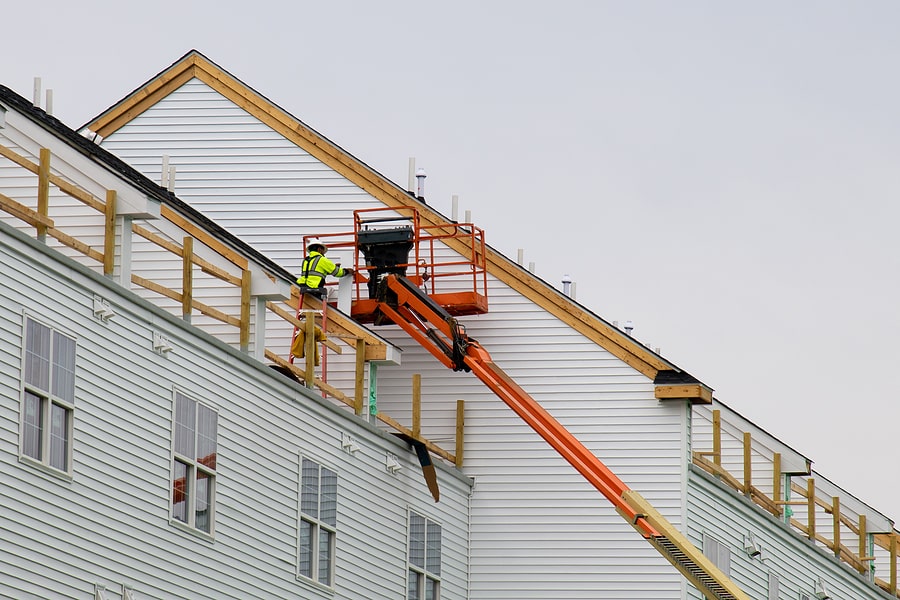The Necessary Overview to the Different Kinds of Exterior Siding and Their Unique Advantages
In the realm of home renovation, choosing the appropriate exterior siding is an essential choice that influences both visual charm and functional efficiency. The variety of products readily available, such as wood, plastic, fiber metal, brick, and concrete, each deal distinct benefits that cater to various requirements and preferences. Comprehending these distinctions can dramatically improve the durability and value of a residential or commercial property - morris siding contractor. With so many options to think about, which exterior siding product really stands out for your certain job? Checking out these choices can result in educated decisions that line up with both style and usefulness.
Timber Home Siding
Wood siding, a preferred option for residential outsides, supplies an ageless visual that combines all-natural appeal with structural integrity. This exterior siding material is available in different designs, consisting of clapboard, roof shingles, and board-and-batten, permitting homeowners to personalize their appearance to match their style preferences. Timber exterior siding is typically crafted from durable types such as cedar, redwood, or pine, which are recognized for their resilience and capability to endure environmental stressors.
Among the primary advantages of wood house siding is its exceptional insulation homes, which can contribute to energy efficiency and reduced heating expenses. Additionally, timber siding is eco-friendly, making it an eco-friendly choice when sourced sustainably. Regular maintenance, consisting of paint or discoloration, can extend its lifespan and boost its look, allowing homeowners to maintain the all-natural charm of the wood.
However, possible drawbacks consist of vulnerability to bugs, rot, and climate damage, demanding appropriate therapy and maintenance - morris siding contractor. Despite these problems, when properly cared for, wood home siding can offer a durable and gorgeous option that boosts the personality of a home while offering a cozy, welcoming ambience

Vinyl Siding
Vinyl house siding has actually arised as a leading option for house owners seeking a low-maintenance outside alternative that integrates sturdiness and affordability. This functional material is crafted from polyvinyl chloride (PVC), making it immune to various weather, consisting of wetness and UV rays. Therefore, vinyl house siding does not warp, rot, or fade, ensuring resilient aesthetic charm.
One of the key benefits of plastic exterior siding is its considerable variety of styles and shades, allowing homeowners to attain the preferred appearance for their property without the requirement for constant repainting. Additionally, plastic siding is simple to install, which can substantially decrease labor prices during building and construction or improvement jobs.
Vinyl siding likewise adds to power efficiency. Lots of options attribute insulation backing, which improves thermal performance, assisting to preserve comfy interior temperatures and possibly decreasing energy bills. Its smooth surface area facilitates simple cleansing, calling for only routine cleaning with a yard tube to get rid of dust and particles.
Fiber Concrete House Siding
Fiber concrete house siding has gotten traction amongst building contractors and house owners alike because of its impressive combination of sturdiness and visual versatility. Made up of a combination of cellulose, concrete, and sand fibers, this exterior siding option is crafted to stand up to extreme climate condition, consisting of high winds, heavy rainfall, and temperature level changes, making it a long-lasting selection for household exteriors.

Among the main benefits of fiber cement siding is its resistance to bugs, such as termites, and its non-combustible nature, offering enhanced fire security. morris siding contractor. Additionally, it is offered in a wide variety of colors, designs, and textures, permitting property owners to attain their desired aesthetic without giving up performance
One more benefit is its low maintenance demands; fiber cement exterior siding typically needs paint or discoloration every 5-10 years, which is less regular than various other products. Its durability adds to a lower total expense of possession, as it reduces the requirement for constant repairs or replacements.
Eventually, fiber concrete siding represents an excellent financial investment for those looking for a durable, eye-catching, and functional outside alternative, combining both form and function to enhance the home's curb appeal.
Steel Siding
The allure of metal check my blog siding hinges on its durable longevity and modern aesthetic appeal, making it a popular selection for modern design. Offered in materials such as aluminum and steel, metal siding supplies an array of coatings and colors, permitting house owners to accomplish an individualized look that complements their layout vision.

Energy effectiveness is one more substantial benefit, as several steel house siding products are developed with insulation choices that assist control interior temperature levels. This can cause lowered power prices in time. Additionally, metal exterior siding is typically recyclable, making it an ecologically friendly option for sustainability-minded property owners.
The setup process for steel house siding can be reasonably simple, leading to a quicker turnaround time for construction projects. On the whole, steel home siding integrates functionality and design, making it a functional choice for those seeking a enduring and aesthetically attractive outside finish.
Block and Rock Home Siding
Brick and rock home siding stands apart as a timeless selection that improves the aesthetic appeal of any home. Recognized for their toughness and low maintenance, these products offer an outstanding roi while additional hints raising the home's visual charm. Readily available in various shades, appearances, and patterns, block and stone can be customized to match diverse building styles, from standard to modern-day.
One of the primary advantages of block and stone siding is their power efficiency. Both products have natural protecting residential properties that help regulate indoor temperature levels, possibly decreasing heating & cooling prices. Additionally, they provide remarkable fire resistance contrasted to other exterior siding alternatives, adding to boosted safety.
Another benefit is their durability. Block and rock can last for years, often requiring minimal upkeep beyond occasional cleaning. Unlike wood home siding, they are resistant to parasites and rot, ensuring a long-lasting exterior that endures the elements.
Conclusion
In summary, the selection of exterior siding substantially influences a home's visual charm, power effectiveness, and upkeep needs. Each kind of home siding-- whether timber, vinyl, fiber brick, steel, or concrete and rock-- provides special advantages customized to different property owner preferences and environmental problems. Recognizing these alternatives makes it possible for educated choices that boost both the durability and visual beauty of household outsides. Inevitably, selecting the right siding is important for accomplishing a balance in between performance and style in residential style.
One of the key advantages of timber home siding is its excellent insulation properties, which can add to power effectiveness and reduced heating prices. Additionally, wood siding is eco-friendly, making it an environmentally friendly choice when sourced sustainably.One of the key benefits of metal home siding is its resistance to numerous environmental elements.Power performance is another substantial advantage, as several steel house siding items are made with insulation choices that help control interior temperatures. Each type of home siding-- whether wood, plastic, fiber metal, block, or cement and additional info stone-- offers special benefits tailored to numerous homeowner preferences and environmental conditions.